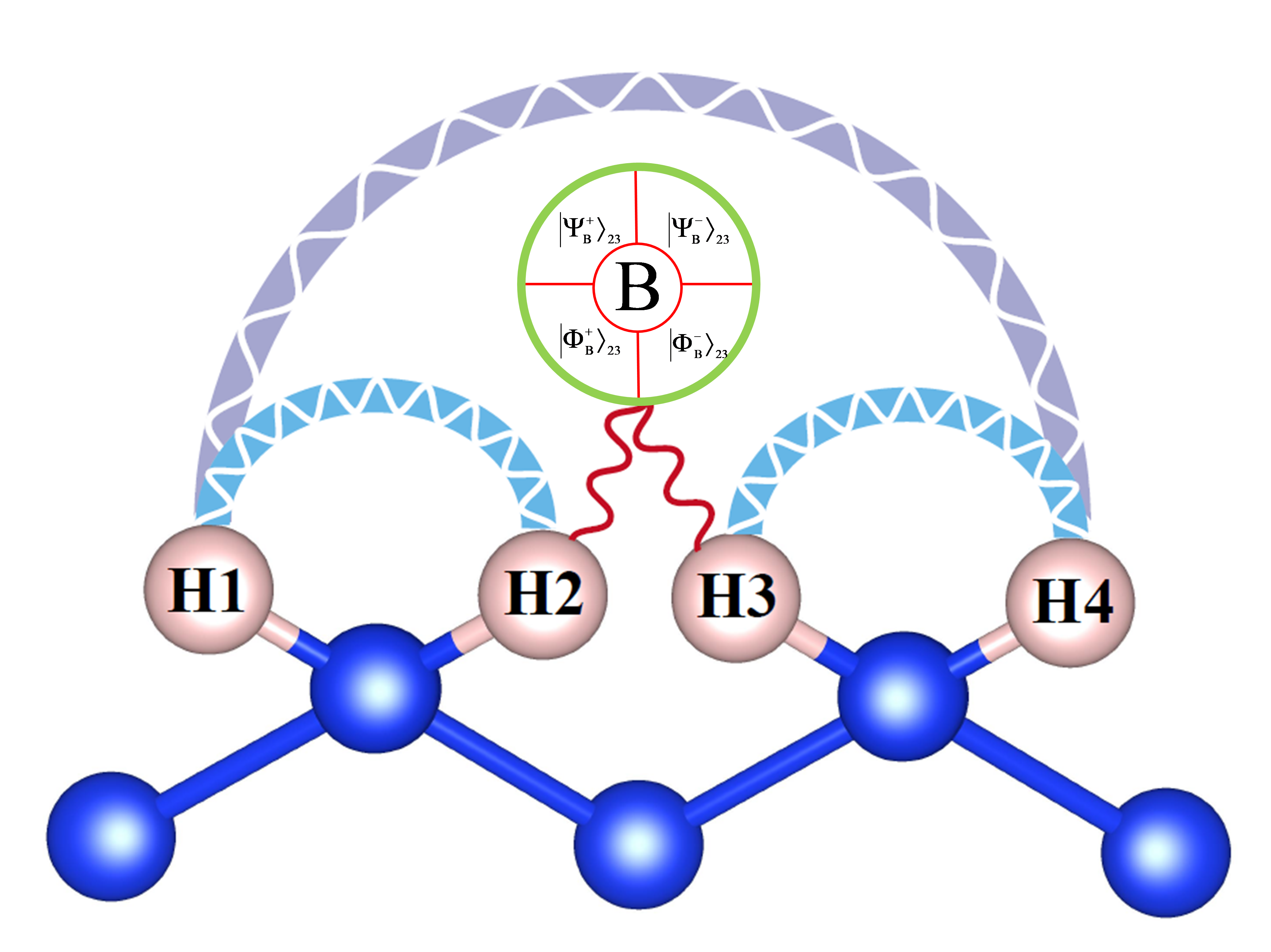Quantum Proton Entanglement in Solid Silicon Surface
Takahiro Matsumoto, Hidehiko Sugimoto, Takashi Ohhara,
Akio Tokumitsu, Makoto Tomita, and Susumu Ikeda
Akio Tokumitsu, Makoto Tomita, and Susumu Ikeda
Molecular hydrogen has two isometric forms: (1) in the triplet state, two proton nuclear spins are aligned in parallel and (2), in the singlet state, two proton spins are aligned in antiparallel. These forms are often referred to as a “quantum entangled state of nuclear spins” and were proposed by Werner Heisenberg and Friedrich Hund in 1927 [1]. Nowadays, these entangled states play an important role in a wide variety of research fields, ranging from astrophysics to nuclear magnetic resonance. However, these states are only found in gas or liquid phase and not in solid phase.
Recently, a team from Nagoya City University (NCU) found a quantum entangled state of two protons in a solid phase−proton terminated silicon (Si) surface [2]. This discovery was made using a technique called “inelastic neutron scattering spectroscopy.” The technique measures both the surface vibrational dynamics and the spin states simultaneously. Compared to the proton entanglement previously observed in molecular hydrogen, this entanglement was characterized by an enormous energy difference of 113 meV between the spin singlet ground state and the spin triplet excited state, which is promising for long lifetime and high temperature operation.
As these solid-state entangled proton qubits atomically are arranged on silicon (Si) surfaces, these could be applied to future quantum technology, such as storing, processing, and transferring. A natural unification of computing platforms between classical and quantum can be achieved by using the solid-state proton qubits. The NCU team stated that “The quantum swapping of fermion particles is an intriguing application.”
REFERENCES
[1] A. Franks, “Orthohydrogen, Parahydrogen and Heavy Hydrogen,” Cambridge University Press (1935).
[2] T. Matsumoto et al., “Quantum Proton Entanglement in Nanocrystalline Silicon Surface,” Phys. Rev. B 103, 245401 (2021).
Recently, a team from Nagoya City University (NCU) found a quantum entangled state of two protons in a solid phase−proton terminated silicon (Si) surface [2]. This discovery was made using a technique called “inelastic neutron scattering spectroscopy.” The technique measures both the surface vibrational dynamics and the spin states simultaneously. Compared to the proton entanglement previously observed in molecular hydrogen, this entanglement was characterized by an enormous energy difference of 113 meV between the spin singlet ground state and the spin triplet excited state, which is promising for long lifetime and high temperature operation.
As these solid-state entangled proton qubits atomically are arranged on silicon (Si) surfaces, these could be applied to future quantum technology, such as storing, processing, and transferring. A natural unification of computing platforms between classical and quantum can be achieved by using the solid-state proton qubits. The NCU team stated that “The quantum swapping of fermion particles is an intriguing application.”
REFERENCES
[1] A. Franks, “Orthohydrogen, Parahydrogen and Heavy Hydrogen,” Cambridge University Press (1935).
[2] T. Matsumoto et al., “Quantum Proton Entanglement in Nanocrystalline Silicon Surface,” Phys. Rev. B 103, 245401 (2021).

Credit: T. Matsumoto/NCU Japan


